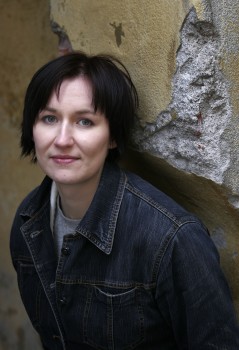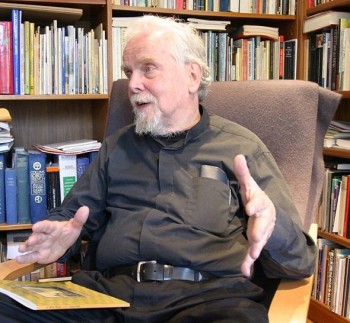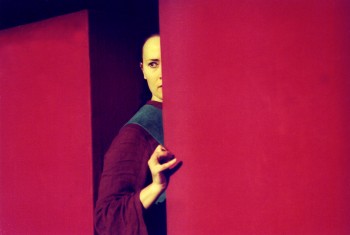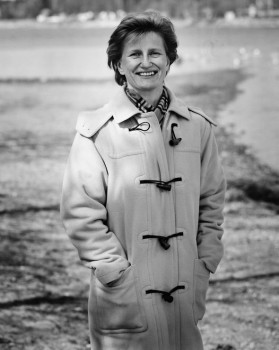Search results for "leena krohn"
Dear reader,
11 February 2009 | Letter from the Editors
welcome to the new Books from Finland website. After 42 years in print, we now navigate virtual worlds. However much Books from Finland may have changed in appearance, though, its essence remains the same – as always, we try to provide you with interesting, well-translated things to read. Made in Finland, or about Finland. More…
The Finlandia Prize for Fiction 2013
5 December 2013 | In the news
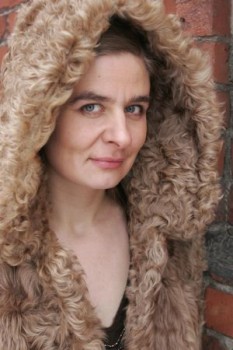
Riikka Pelo. Photo: Heini Lehväslaiho
The director general of the Helsinki City Theatre, Asko Sarkola, announced the winner of the 30th Finlandia Literature Prize for Fiction, chosen from a shortlist of six novels, on 2 December in Helsinki. The prize, worth €30,000, was awarded to Riikka Pelo for her novel Jokapäiväinen elämämme (‘Our everyday life’, Teos).
In his award speech Sarkola – and actor by training – characterised the six novels as ‘six different roles’:
‘They are united by a bold and deep understanding of individuality and humanity against the surrounding period. They are the perspectives of fictive individuals, new interpretations of the reality we imagine or suppose. Viewfinders on the present, warnings of the future.
‘Riikka Pelo‘s Jokapäiväinen elämämme is wound around two periods and places, Czechoslovakia in 1923 and the Soviet Union in 1939–41. The central characters are the poet Marina Tsvetaeva and her daughter Alya. This novel has the widest scope: from stream of consciousness to interrogations in torture chambers and the labour camps of Vorkuta; always moving, heart-stopping, irrespective of the settings.’
The five other novels were Ystäväni Rasputin (’My friend Rasputin’) by JP Koskinen, Hotel Sapiens (Teos) by Leena Krohn, Terminaali (‘The terminal’, Siltala) by Hannu Raittila, Herodes (‘Herod’, WSOY) by Asko Sahlberg and Hägring 38 (‘Mirage 38’, Schildts & Söderströms; Finnish translation, Kangastus, Otava) by Kjell Westö (see In the news for brief features).
Marja-Leena Lempinen: Punainen lumme [The red lily]
3 March 2009 | Mini reviews
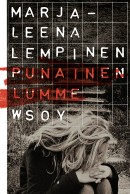 Punainen lumme
Punainen lumme
[The red lily]
[Helsinki: WSOY, 2008. 232 p.
ISBN 978-951-0-34434-7
€ 21, hardback
16-year-old Ella’s story is told with gusto and vitality. The novel deals critically, in a way that will appeal to young readers, with questions of Internet etiquette, personal protection and the right to one’s own body. Lempinen depicts the sexual exploitation of a young girl in realistic terms, but does not over-dramatise it. Ella, however, needs to regain her mental equilibrium in a psychiatric hospital, with the help of the understanding staff. The gift of a red lily she receives from friends develops into a beautiful symbol of her gradual attainment of her sexual identity. As in her earlier novels for teens, Lempinen (born 1950) gives an important role to the experience of nature, and this is a leading factor in Ella’s recovery.
Growing together. New Finnish children’s books
28 January 2011 | Articles

Hulda knows what she wants! From the cover of a new picture book by Markus Majaluoma (see mini reviews*)
What to choose? A mum or dad buys a book hoping it will be an enjoyable read at bedtime – adults presume a book is a ‘good’ one if they themselves genuinely enjoy it, but children’s opinions may differ. Päivi Heikkilä-Halttunen reviews the trends in children’s literature published in Finland in 2010, and in the review section we’ve picked out a handful of the best on offer
Judging by the sheer number and variety of titles published, Finnish children’s and young people’s fiction is alive and well. If I had to describe the selection of books published in 2010 in just a few words, I would have to point to the abundance of titles and subject matters, and the awareness of international trends.
Since 2000 the number of books for children and young people published in Finland each year – including both translated and Finnish titles – has been well in excess of 1,500, and increasing, and this growth shows no signs of slowing down.
Little boys, ten-year-olds who don’t read very much and teenage boys, however, were paid very little attention last year. Although gender-specificity has never been a requirement of children’s fiction, boys are notably pickier when it comes to long, wordy books, especially those that might be considered ‘girly’. More…
Avartuva maailma. Kartta-aarteita A. E. Nordenskiöldin kokoelmasta [The expanding world. Treasures of the A.E. Nordenskiöld Map Collection]
27 February 2014 | Mini reviews, Reviews
 Avartuva maailma. Kartta-aarteita A. E. Nordenskiöldin kokoelmasta
Avartuva maailma. Kartta-aarteita A. E. Nordenskiöldin kokoelmasta
[The expanding world. Treasures of the A.E. Nordenskiöld Map Collection]
Tapio Markkanen, Leena Miekkavaara , Anna-Maija Pietilä-Ventelä
Helsinki: Finnish Literature Society, 2013. 175 pp., ill .
ISBN 978-952-222-431-6
€47, paperback
In the late 19th century the Finnish-born scientist and explorer Adolf Erik Nordenskiöld (1832–1901) assembled an extensive collection of historical maps which gained international recognition. The collection is housed in the Finnish National Library and in 1997 was included in UNESCO’s Memory of the World register. In 2013 an exhibition featuring part of the collection was held in Helsinki. Avartuva maailma is a beautifully illustrated book, with large pages containing plenty of text (in Swedish and English). Professor Tapio Markkanen examines the changing picture of the world from antiquity to modern times, as well as the development of maps and cartography. In some ancient maps the continents were portrayed in the likeness of people or animals, or with the south being placed at the top. An essay by map historian Leena Miekkavaara traces Nordenskiöld’s biography, showing how he acquired world fame after making the first complete crossing of the Northeast Passage in 1878. The Collection is presented and introduced by the researcher Anna-Maija Pietilä-Ventelä, with illustrations that also cover the history of cartography.
Translated by David McDuff
Circus days
20 November 2009 | In the news
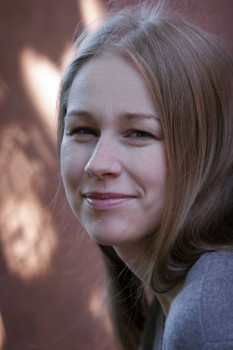
Leena Parkkinen. Photo: Heidi Lehväslaiho
On 19 November the Helsingin Sanomat Literature Prize, the Helsinki newspaper’s prize for the best first work of the year, worth €15,000, was awarded to Leena Parkkinen (born 1979).
Parkkinen’s first novel, entitled Sinun jälkeesi, Max (‘After you, Max’, Teos) depicts life in the circus and Siamese twins in Helsinki after the First World War. The jury made their choice out of more than 70 works.
The guest book
30 June 1997 | Archives online, Fiction, Prose
An extract rom the novel Kenen kuvasta kerrot (‘Whose picture are you talking about’, Otava, 1996). Introduction by Pia Ingström
Late at night before going to bed An Lee had turned off all the lights, opened the large bedroom window, breathed the cool air. She had done this often. It made it easier to fall asleep. It was enough to look outside for a moment and to breathe in slowly, and at the same time the bedroom air freshened and changed for the night.
Then she had closed and locked the window, drawn the curtains, and switched on the dim wall light. It might be nice to decorate the space between the double windowpanes with wooden animals, she had thought, not for the first time. They had had some at home, her mother had been a collector of such things. Almost all of them pink and lemon yellow, a whole zoo between the windows, only the panther had been pitch-black, and on one of the elephants the pretty grey color had been scratched and splotchy on one side. More…
Memory in my hands
19 August 2010 | Fiction, poetry
A couple of years ago Timo Harju chose the non-military alternative to national service and was detailed to work at an old people’s home. Its director warned him that its inhabitants were ‘no sweet old grannies and grandpas’. Harju thought this might be a joke. In his first collection of poems, entitled Kastelimme heitä runsaasti kahvilla (‘We watered them abundantly with coffee’, Ntamo, 2009), he patiently gathers fragments of dreams and fears, memories and forgotten songs in the house of oblivion, treating them with gentle empathy. Commentary by Pia Ingström
Ward A5, Thursday
The clouds in the nursing home corridors, sky-open springlike after a bathe
and forgotten, in a frayed blue dressing-gown beside an osiery.
The grannies in the nursing home corridors, the last beautiful pride
you keep in a small wooden box behind your forehead:
if the lid opens by accident all the things may drop to the floor
topsy-turvy you won’t be able to find them, your back won’t let you
you won’t recognise them any more even if you do,
the springtime tears your insides to pieces.
Here they come, the grannies.
Better to stay here indoors, the journey to the dining room is a rough one
exposed like this
a long way and all by sleigh.
You stare at the keyhole: the clouds are coming. More…

